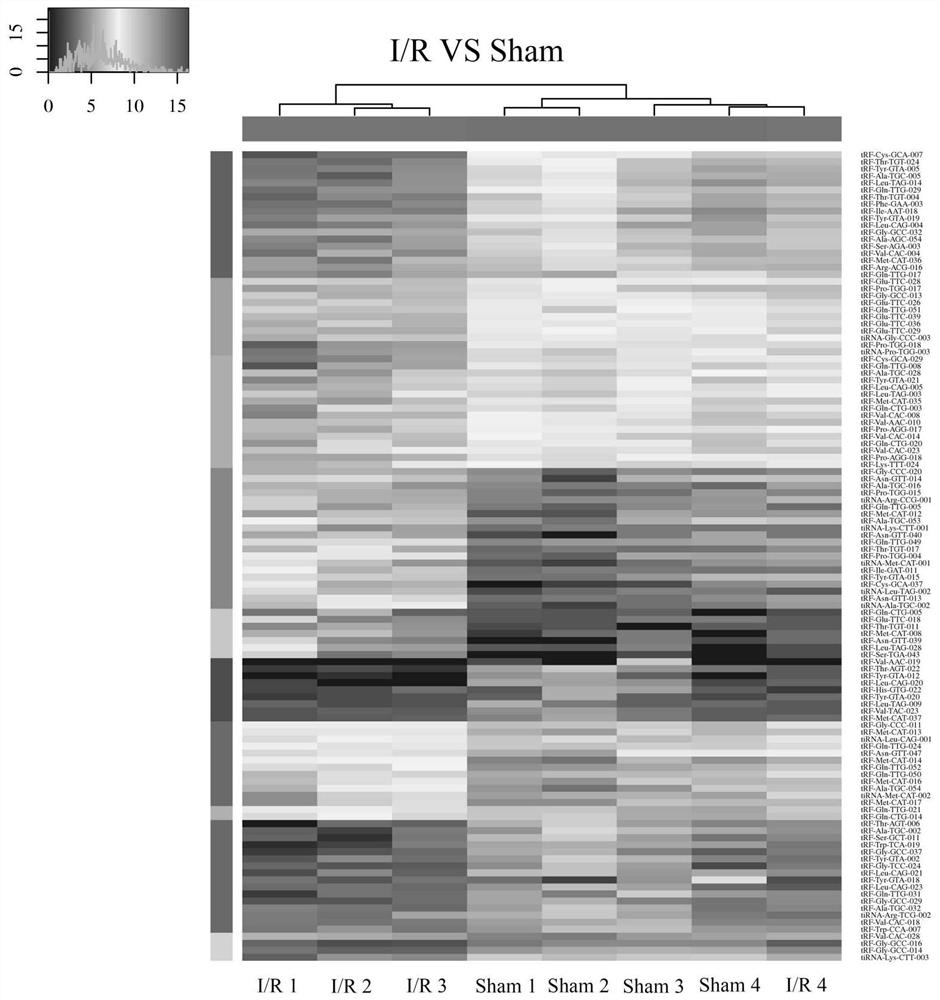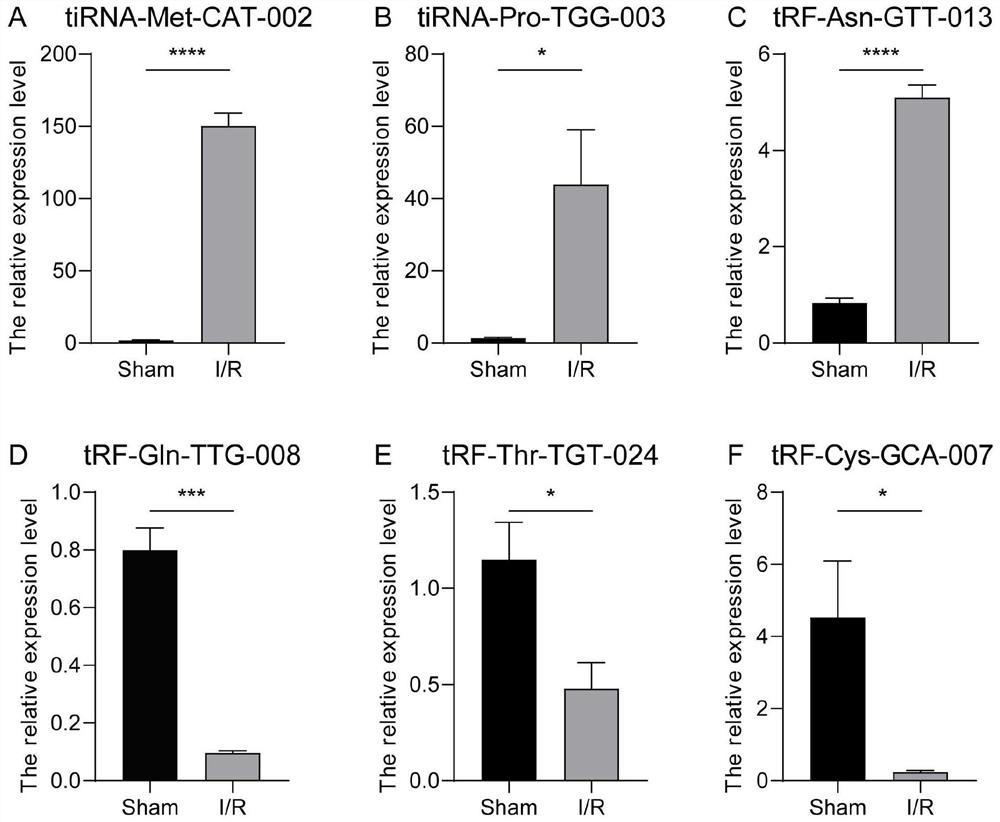Screening method of tsRNA related to myocardial ischemia reperfusion
A technology for myocardial ischemia and screening methods, applied in the field of biomedicine, can solve problems such as the inability to understand the function of tsRNA
- Summary
- Abstract
- Description
- Claims
- Application Information
AI Technical Summary
Problems solved by technology
Method used
Image
Examples
Embodiment 1
[0098] Construct an in vitro myocardial ischemia-reperfusion model, and use sequencing to screen out differentially expressed tsRNAs during myocardial ischemia-reperfusion. The steps are as follows:
[0099] a. Grouping and treatment of myocardial ischemia-reperfusion in vitro model animals: 6-week-old Sprague-Dawley (SD) male rats (body weight 260-280g), kept at temperature (22-25°C) and humidity (relative humidity 50%) ) in an animal room with a 12h / 12h light-dark cycle and allowed free access to food and water. The SD rats were randomly divided into two groups: a sham operation group (sham operation, n=4), and a myocardial ischemia-reperfusion group (I / R, n=4). Rats in the myocardial ischemia-reperfusion group were anesthetized with 2% sodium pentobarbital (50 mg / kg intraperitoneally), and artificially ventilated (80 times / min) using a rodent mask. After the anesthesia was completed, at the fourth intercostal space on the left side of the sternum, the skin and muscle tissu...
Embodiment 2
[0110] The rat myocardial ischemia-reperfusion model and myocardial cell hypoxia-reoxygenation model were constructed, and the sequencing results were verified by real-time quantitative PCR.
[0111] a. Construct a myocardial ischemia-reperfusion model, as described in a in Example 1.
[0112] b. Construct the cardiomyocyte hypoxia-reoxygenation model: place the cardiomyocyte cell line H9c2 in the cell culture medium of sugar-free DMEM without FBS, put them into the hypoxic incubator and culture them for 2 hours, and then put the two groups of cells into the normal The oxygen incubator was reoxygenated for 3 hours to establish a cardiomyocyte model of cardiomyocyte hypoxia and reoxygenation injury. The cells in the normal group were cultured in the normoxic incubator for 5 hours; among them, the hypoxic incubator was 2 , 5%CO 2 , about 95% N 2 ; Normoxic incubator is 21% O 2 , 5%CO 2 , 74%N 2 ;
[0113] c. Tissue sample homogenization: For every 50-100 mg tissue sample, a...
Embodiment 3
[0124] To construct cardiomyocyte hypoxia-reoxygenation model, tiRNA-Met-CAT-002-mimics were used to overexpress tiRNA-Met-CAT-002.
[0125] Cell viability was detected by CCK-8.
[0126] Western blot was used to detect autophagy-related indicators; the ratio of LC3-II / LC3-I and the expression of p62 protein.
[0127] Electron microscopy was used to observe the formation of autophagosomes.
[0128] a. Construct an in vitro cardiomyocyte hypoxia-reoxygenation model, as described in b in Example 2. The cells were randomly divided into four groups: Control group; H / R group; H / R+tiRNA-Met-CAT-002-mimics-NC group; H / R+tiRNA-Met-CAT-002-mimics group.
[0129] b. Overexpress tiRNA-Met-CAT-002 using tiRNA-Met-CAT-002-mimics: add 150ul OPTI-MEM and 1.5ul lipo2000 to reagent tube a; add 150ul OPTI-MEM and 5ul mimics-NC to reagent tube b and mimics; after standing for 5 minutes, mix the two tubes a and b; after mixing and standing for 15 minutes, add the above mixed solution to 1ml of...
PUM
 Login to View More
Login to View More Abstract
Description
Claims
Application Information
 Login to View More
Login to View More - R&D Engineer
- R&D Manager
- IP Professional
- Industry Leading Data Capabilities
- Powerful AI technology
- Patent DNA Extraction
Browse by: Latest US Patents, China's latest patents, Technical Efficacy Thesaurus, Application Domain, Technology Topic, Popular Technical Reports.
© 2024 PatSnap. All rights reserved.Legal|Privacy policy|Modern Slavery Act Transparency Statement|Sitemap|About US| Contact US: help@patsnap.com










